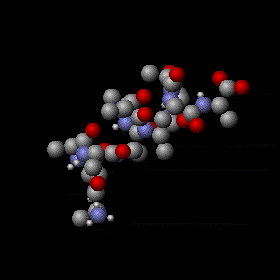Results 31 to 40 of 48
-
11-18-2009, 12:05 PM #31C.I.A.

- Join Date
- Oct 2005
- Gender

- Posts
- 2,722
-
11-18-2009, 12:10 PM #32
-
11-18-2009, 03:31 PM #33Banned User

- Join Date
- Nov 2008
- Gender

- Posts
- 2,521
ang molecules jud mismo galihok by default? kay sa akong pagkahibalo ang nagalihok by default kay ang electrons og strings og katong mga quarks
Last edited by hizuka007; 11-18-2009 at 03:35 PM.
-
11-18-2009, 05:53 PM #34
that is the main definition of temperature... temperature is a macroscale relative measure of the average kinetic energy of the particles in the system. heheh! Yes, atoms and molecules in the universe are moving by default. Probably the coldest place in the universe are in the Ultracold Atoms and molucules research groups around the world or at least that what the physicists working on it claim. The coldest temperature achieved is in the order of ~nanoKelvin. That is very very cold! Atoms and are almost at a stand still.
 haha.
haha.
nagbuhat ko ug thread sa una dedicated to this.. It's a very hot research field in physics and its also what I'm working on right now. https://www.istorya.net/forums/scienc...d-physics.html

taken from Temperature - Wikipedia, the free encyclopedia
-
11-19-2009, 07:30 AM #35
^ ^ ayos pud kaayo imo r.search bro.. pero i didnt notice ur thread b4
ty...
-
11-19-2009, 11:26 AM #36
yup! i second the motion!

everything is moving.. its just the different states (solid/liquid/gas) is determined by the molecular structure. if the molecules of a substance can be packed together smoothly, then it will persist as a solid.. otherwise, it will be in liquid or other non-solid form.. basically that's the underlying principle.. (or squishy sya na type of solid if dili jud mucompactly pack together..)
-
11-19-2009, 02:04 PM #37Banned User

- Join Date
- Nov 2008
- Gender

- Posts
- 2,521
ah okeh...
pero nganong kani nga video: YouTube - IBM NANOTECHNOLOGY VERY COOL! Moving Individual Atoms with Tuning Forks for Memory Storage
kay makatanggal/makapamove man silag atom nga pirting lihukana man kaha sa atom? nya ang ilang animation pud kay wa galihok ang atom (absolute zero? ..impossibly).
so kung pirting lihukana sa atom, dili unta mapiont sa ilang device ang individual atom nga gusto nilang ibalhin.
-
11-19-2009, 04:02 PM #38
if it is in solid form, then smooth ang compaction sa substance, so dili na jud kaayo na xa mulihok, unlike water molecules (or oils) which are always bumping into each other kay dili man xa maka-form of layers of molecules to make it compact into solid form. as for determining the position of individual atoms, you'd have to play with some quantum statistical mechanics there.. as what fritzd has pointed out earlier..
-
11-19-2009, 04:53 PM #39
interesting nga ni ask ka ani, gitudluan lang mi bag.o lang how probing microscopy works in detail (Scanning tunneling microscopy, transmission electron microscopy, atomic force microscopy, etc.....) hehehe! Atomic Force Microspy is a probing techinique which tries to measure the atomic ang molecular forces in order to obtain a map of the surface. Makakuha gyud ka ug enough details to really see the atoms. A very very simple analogy is moving your fingers lightly along a rough surface and feeling the terrain. hehehe
Nganhi they are exploiting the attractive van der waals forces in order to trap atoms so that they could move them. pero you might ask, how can this be possible when atoms are always moving? Answer? They work under really low temperatures and as much as possible in vacuum. hehehe! IBM also did this with Scanning electron microscopy.. very very remarkable.. hehehe
-
11-19-2009, 07:03 PM #40Banned User

- Join Date
- Nov 2008
- Gender

- Posts
- 2,521
Advertisement
Similar Threads |
|






